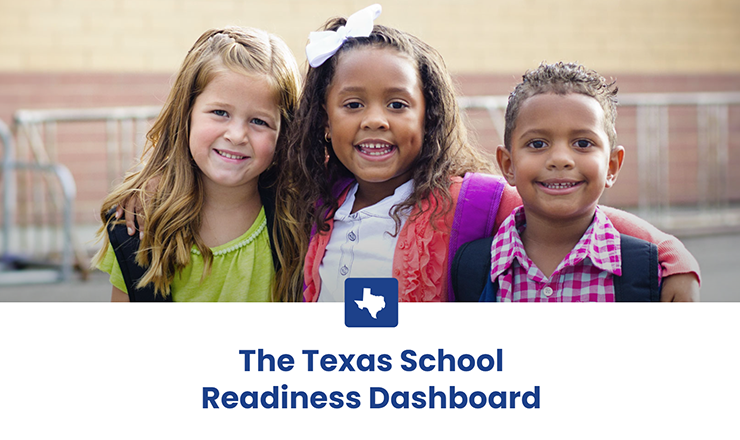RESEARCH BRIEF | B.004.0221
February 2021
Research demonstrates that the prenatal-to-3 age period lays the foundation for children’s cognitive and emotional development.1 It is critical that infants and toddlers receive nurturing, responsive care and engage in stimulating interactions to help their brains grow during this sensitive period.2
These positive interactions typically occur first at home with parents and caregivers in early infancy, but because of financial need or personal choice, many parents return to work soon after a child’s birth. Over 66 percent of first-time mothers in the US work during their pregnancies,3 and 82 percent of pregnant workers remain on the job until they are within one month of giving birth.4 Many working mothers wish to return once they have had enough time to recover and bond with their new child. More than half of mothers return within a year of giving birth, and one in four mothers, primarily those with lower income, return within just two weeks, even though many report that they would prefer to take longer leave if they could afford it.5
Children benefit when they are in safe, high-quality child care when they cannot be with their parents. The supply of high-quality child care is limited in many regions of the country, however, and infant care is often scarcer and more expensive than care for older toddlers and children, both for providers and parents.6
Paid family leave has a variety of benefits on its own, but it can also serve as a solution to the infant care challenges described above. Paid leave provides parents with time to recover from a birth and bond with their infants (or newly adopted or foster child) while remaining connected to their jobs and maintaining financial security. Paid parental leave can save families money they would otherwise have to spend on expensive infant care, and paid leave policies can reduce the demand for limited child care slots in the immediate period after birth. Ultimately, offering paid leave provides parents with a greater range of choices for how they structure and balance work and family during their children’s first years. More options become accessible to more families, boosting the likelihood that children can develop in safe and nurturing environments that fit with their families’ needs.
Evidence shows that paid family leave facilitates greater parental attachment to the labor force in the long term, and therefore, high-quality child care remains a critical need for parents when they return to their jobs. State and federal policies that ensure families have access to paid leave from work—and access to affordable child care—can work in tandem to best support children’s development and promote positive family outcomes over the entire early childhood period, from birth through preschool.
The Availability of at Least 6 Weeks of Paid Family Leave Promotes Better Outcomes for Families
The US remains the only OECD countryi without a national guarantee of any paid parental leave.7 However, many women and some men receive paid family leave through their employers, and evidence shows that a variety of health and social benefits accrue to families when parents are able to take paid time off from work immediately after the birth or adoption of a child. Studies of parents with access to paid leave have found that both mothers and fathers are more likely to take time off when it is compensated,8 infants and mothers are less likely to be re-hospitalized after a birth,9 mothers are more likely to establish and maintain breastfeeding10 and report lower stress levels,11 and paid leave has been associated with higher scores on children’s language assessments.12
As of February 2021, a total of nine states and the District of Columbia have adopted policies providing for paid family leave statewide, and the Prenatal-to-3 Policy Impact Center conducted a systematic review to identify the causal impacts of such statewide policies requiring employers to offer paid leave benefits.13 Rigorous studies of such policies in the US demonstrate that requiring employersii to offer at least 6 weeks of compensated leave is an effective way to secure these benefits for millions of infants and their parents and improve wellbeing at the population level. Studies of California and New Jersey, whose paid leave policies have been most thoroughly studied to date because of early adoption (in 2004 and 2009, respectively), have found that mandating 6 weeks of paid leave leads to improvements in children’s physical health and safety,14 both in infancy and longer term;15 increases timely vaccinations;16 boosts maternal mental health;17 and increases parent-child activities together (including reading and meals).18
Evidence suggests that some of these benefits may result from lower use of nonparental care during infancy after states pass paid leave. For example, California saw a 12 percent reduction in nonparental care during the first year of life that was attributed to the passage of its paid leave program,19 and many studies suggest that spending more time at home immediately after birth has health and social benefits for infants.20 They may be less likely to contract illnesses from interacting with others and may receive more one-on-one time to develop secure attachments with parents. These experiences can foster better behavioral outcomes and set young children up for success later in life.
Statewide paid leave policies have also been shown to help narrow racial and socioeconomic gaps in leave-taking,21 given that employer-based benefits are disproportionately available to White workers and higher earners.22 Greater equity remains a key goal for paid leave policy design and implementation, because gaps persist even after statewide policies are implemented.23 For example, the portion of wages replaced in a paid leave policy may still not offer sufficient resources for lower-income families (the replacement rate is as low as 60 percent in some states), and some workers may not be aware of their benefits if their employers do not inform them about, and help them take advantage of, paid leave programs.24
Families’ economic outcomes can benefit significantly from statewide paid leave policies. For example, California and New Jersey saw a 5 to 8 percentage point increase in mothers’ labor force participation following the passage of their policies,25 and in California, paid leave led to a 13 percent increase in mothers’ job continuity after giving birth.26 Relatedly, families’ household financial security has been shown to benefit from paid leave; California’s policy was linked to higher household income ($3,400 annually) and a lower risk of poverty (10.2% reduction).27 Businesses also report positive impacts of paid leave in surveys, including higher employee engagement, productivity, and morale, as well as lower turnover.28 For a more detailed discussion of paid family leave’s demonstrated benefits, see the Policy Impact Center’s comprehensive evidence review in our Prenatal-to-3 Policy Clearinghouse.29
Studies of leave duration suggest that parents who take even greater lengths of paid leave (e.g., 12 weeks) may see larger health and attachment benefits than those who take fewer weeks.30 As mentioned, however, available evidence on state policy impacts comes primarily from California and New Jersey, both of which offered 6 weeks until very recently (as of July 2020, California offers 8 weeks and New Jersey offers 12 weeks).31 As more states enact policies extending beyond 6 weeksiii and additional research is conducted, we will have a stronger evidence base for the ideal length of statewide leave policies.
Paid Leave Can Be a Beneficial Alternative to Nonparental Care for Infants
Early bonding time is critical for forming secure child-parent attachments.32 Many parents would prefer to stay home with their infants immediately after birth rather than placing them in child care settings at a very young age, but data show that a significant portion of parents, including a disproportionate number of families of color,33 cannot afford to take unpaid leave and forgo needed income.34 Over 80 percent of children experience nonparental care at some point in their first year of life.35 Approximately 30 percent of infants and toddlers are cared for in home-based settings as their primary arrangement (including paid and unpaid providers); 12 percent are cared for in centers; and 21 percent in other arrangements.36
In addition to supporting families’ care preferences and producing health and social benefits for infants and parents alike, paid family leave of at least 6 weeks can relieve families of the initial burden of finding affordable infant child care slots, which were scarce prior to the pandemic but are becoming more scarce given the wave of pandemic-related child care closures that began in 2020.37 According to the Center for American Progress, over half of the country qualified as a child care desert even prior to the pandemic, which means that less than one licensed child care spot was available for every three children under age 5.38 High cost compounds limited supply; according to a recent report by New America, infant care costs more than in-state college tuition in 33 states, and can cost as much as 25 percent of median income in some states.39 Providing paid leave to more families can mitigate this financial challenge, and paid leave can relieve parents of the burden of having to patch together informal arrangements with family, friends, and neighbors who are often called on to care for infants when licensed, high-quality slots cannot be found or are unaffordable.40
As with access to paid family leave, the data show that disparities in child care access exist between racial and ethnic groups.41 Over two-thirds of Black and Hispanic families reported experiencing financial hardship related to child care in a recent survey, compared to 60 percent of White families and 53 percent of Asian American families.42 In addition, approximately twice as many Black parents reported experiencing job disruptions because of child care problems compared to White parents in a recent analysis.43 To close these gaps while strengthening paid leave and child care policies, policymakers must examine and address the factors that contribute to disparities in access.
Child Care Can Support Families’ Economic Security When Parents are Ready to Return to Work
Given that paid family leave has been shown to facilitate greater long-term attachment to work and promote job continuity after welcoming a new child,44 well-funded and equitable child care policies are a necessary complement to paid leave and a critical component of a successful prenatal-to-3 system of care. High-quality child care can serve a two-fold purpose in allowing parents to return to work while providing a nurturing and stimulating environment for children to thrive and learn.
The Policy Impact Center’s review of the evidence suggests that child care subsidy receipt and greater state subsidy spending can help ensure that parents of young children have access to care so they can work and provide for their families.45 Although causal research does not yet support a link between subsidies and the quality of infant and toddler care, states may be able to improve access to care by strengthening subsidy policy. For example, increasing the payment rates to providers and reducing family copayments may expand access and increase affordability.
States can consider other ways to support child care through policy, such as boosting compensation for child care workers.46 Wages in the child care industry remain much lower than those for other educators, and women comprise over 90 percent of the child care workforce, so provider pay is an important gender equity issue. In addition, women of color, who are paid less than their White and male counterparts regardless of industry, comprise 40 percent of the 1.5 million child care workers in the US (double their representation in the general US population).47
Although causal evidence is limited, anecdotal and observational evidence suggests that better pay and benefits could reduce stress and improve job satisfaction and retention among those caring for our youngest children, and this could lead to better classroom quality and stronger child-teacher interactions.48
Even Without a National Guarantee, States Can Support Better Family Outcomes by Coupling Strong Paid Leave and Child Care Policies
Based on the evidence supporting the social and economic benefits of paid leave49 and subsidized child care,50 state and federal policies could benefit millions of additional children and families across the country. Recent polls have found that 80 percent of voters from across the political spectrum support a national paid leave program, and 60 percent of parents surveyed ahead of the 2020 general election reported that “there is a serious problem finding quality, affordable child care in the community.”51 The COVID-19 pandemic has further highlighted the critical need for child care availability and its importance to the economy,52 as millions of parents have struggled to work from home while caring for young children whose day care centers or schools have been temporarily shuttered.53
Even in the absence of a national guarantee, states can independently take steps to strengthen policies in the complementary areas of paid leave and child care. Both policies encourage and support parents’ choices to work when and how much they choose to during their children’s earliest years. The Prenatal-to-3 State Policy Roadmap54 is a tool that can help states use evidence to develop policies in these two critical areas that work together to support families.
- Organization for Economic Cooperation and Development, a consortium of 37 countries committed to working together to promote democracy and economic cooperation.
- A state may require only employers of a certain size (over 25 or 50 employees, for example) to offer leave, or they may mandate that all employers must provide these benefits. States may also determine which employees are eligible, based on how long they have worked for the employer and whether they meet a minimum threshold of earnings in a given time period prior to taking leave.
- As of February 2021, seven states offer 12 or more weeks of paid family leave in state policy, but not all seven states have begun implementing the policies and paying out benefits.
Recommended Citation
Prenatal-to-3 Policy Impact Center. (2021). Paid Family Leave and Affordable Child Care Are Integral to a Strong Prenatal-to-3 System of Care (B.004.0221). Child and Family Research Partnership. Lyndon B. Johnson School of Public Affairs, University of Texas at Austin. https://pn3policy.org/resources/paid-family-leave-and-affordable-child-care-are-integral-to-a-strong-prenatal-to-3-system-of-care.
© February 2021, Prenatal-to-3 Policy Impact Center, All Rights Reserved. The Prenatal-to-3 Policy Impact Center at The University of Texas at Austin LBJ School of Public Affairs translates research on the best public investments into state policy actions that produce results for young children and society.



